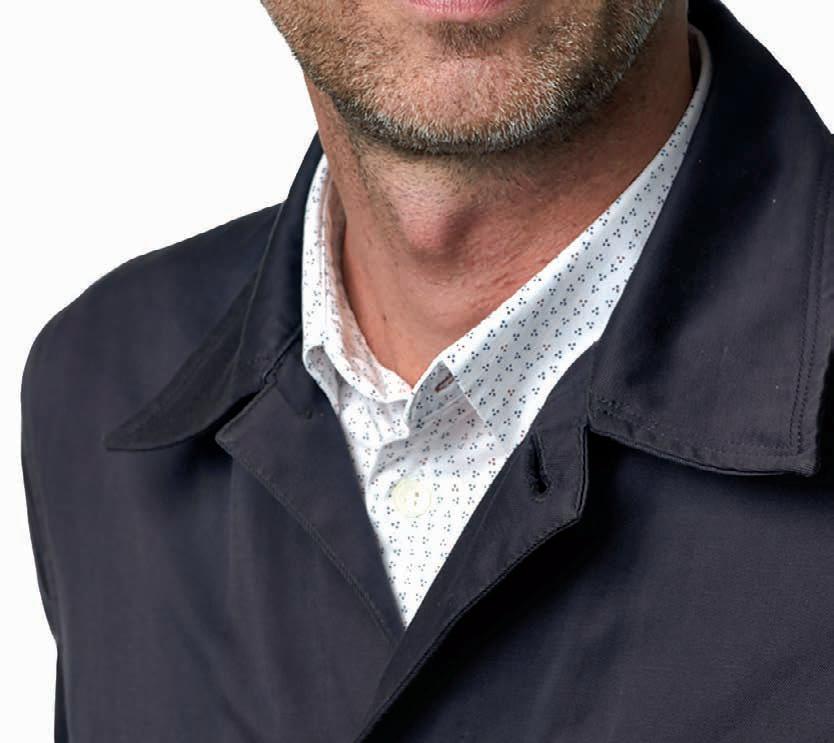
5 minute read
MEDIA AGENCY: GLOBAL
How agencies and brands can build highly successful relationships
BENOIT CACHEUX examines how in-housing affects the relationship between agencies and clients.
Irecently had the pleasure of joining an agency-brand fi reside chat at the latest Programmatic Pioneers virtual event, titled ‘Thinking partnership, not service: How can agencies and brands build collaborative relationships to ensure mutually benefi cial and highly successful alliances?’ Andrew Lowdon, director of agency services at ISBA, moderated the event. I was joined on screen by Richard Bettinson, director of media strategy and planning for EMEA at Hilton. These are some of the areas we discussed.
ACCELERATION OF THE IN-HOUSE TREND AND THE ROLE OF AGENCIES
The topic of in-housing has not taken over our conversations with clients. We still think it’s an important topic, but the majority of our clients are not accelerating their shift to in-house models. We believe there’s a widespread realisation that taking all media in-house is a very diffi cult task in terms of talent, processes like fi nance and overall ways of working. However, we are building hybrid models that create a much deeper connectivity, with teams made up of clients and agency talent working together as a joint team. It could be called in-housing, but we see it as a positive evolution of the agency and client partnership.
ACHIEVING INTEGRATION AND ALIGNMENT BETWEEN IN-HOUSE AND AGENCIES
The better models for in-housing have this integration and alignment at heart, so if there’s a single best practice, it is the focus on ensuring that agency teams are closely connected to in-house teams, rather than in-house teams working more directly with clients’ teams. This connectivity drives not only best practices such as better audience planning, but also reporting and analytics with more data consistency and campaign intelligence. The latter is critical in ensuring there is one version of truth across both the agency team and in-house team.
CLIENTS RECRUITING MEDIA TALENT FROM AGENCIES: AN OPPORTUNITY OR A THREAT?
It’s an interesting evolution as it means the marketplace is becoming progressively more competitive for recruitment. Traditionally, we had to focus on being attractive versus other agency groups. We now have to be competitive in a wider context. However, being a glass-half-full sort of person, I see this as extremely positive: increased expertise on the client side allows us to have more sophisticated conversations, do more innovative things and generally move faster.
WHAT’S THE MEANING OF TRANSPARENCY – THE MOST-USED WORD IN MEDIA?
We want to ensure that our clients have full visibility of how their marketing budgets are invested, whether it’s for agency fees, media spend, tech costs, and so forth. This is critical and one of the core pillars of our organisation, Publicis Groupe. We completely agree that this is critical in any agency/client relationship. Over the last few years, the focus has been around programmatic and transparency.



Traditionally, agencies have been more concentrated on the demand side, but we have now taken an active stance on helping to solve transparency issues on the supply side. Zenith’s involvement in the ISBA programmatic study is a great testament to our commitment to transparency.
THE ROLE OF DATA IN OUR THINKING, NOW AND IN THE FUTURE
Data has played a central role for many years and has driven the growth seen in programmatic investments. However, it’s true that we are seeing an evolution in its sophistication, with an increasingly higher volume of fi rst-party data being used versus the third-party variety. We’re seeing clients very focused on building second-party data partnerships, which we believe will be critical in the future and give brands partnering together a unique asset. We’re also gearing up for the changes coming with the gradual disappearance of trackers such as IDFA or third-party cookies. Getting ready for this new future now is essential!
GOING IN-HOUSE AND LOSING THE BENEFITS OF A CLIENT/AGENCY RELATIONSHIP
If the client really wishes to go in-house, we would always recommend that they build their in-house operations with the support of the agency, and effectively create a hybrid model where the agency, in-house team and client team work together with common goals. A connected framework would allow a client still to benefi t from their agency’s expertise, while managing directly their in-house activation of media.
THE IMPACT OF IN-HOUSING AND THE AGENCY ROLE FIVE YEARS FROM NOW
As you’ve probably gathered, we do not INNOVATIVE THINGS AND believe that all media will move in-house. However, we see a future where agencies GENERALLY MOVE FASTER and clients work very closely together on defi ning the right integrated model. We’ve talked about hybrid models and we see them as the future, where the ways of working and processes are engineered together, and they drive a much deeper level of connectivity between agencies and clients. This hybrid approach allows clients to focus on the performance of their business, and agencies to provide their expertise in strategy, execution and technology as we increasingly move to a world of automation.
Benoit Cacheux is global chief digital offi cer at Zenith. He is responsible for helping defi ne global clients’ acceleration plans when it comes to advertising in the digital age. Cacheux’s focus ranges from building the right data and technological capabilities through to delivering new operational models for media activation, with the objective of driving superior growth for global organisations from a range of sectors such as FMCG, pharma, automotive, appliances, luxury, eyewear and beauty. He’s passionate about the latest ways of driving commerce, and innovation in marketing related to machine learning and blockchain.
Benolt Cacheux










